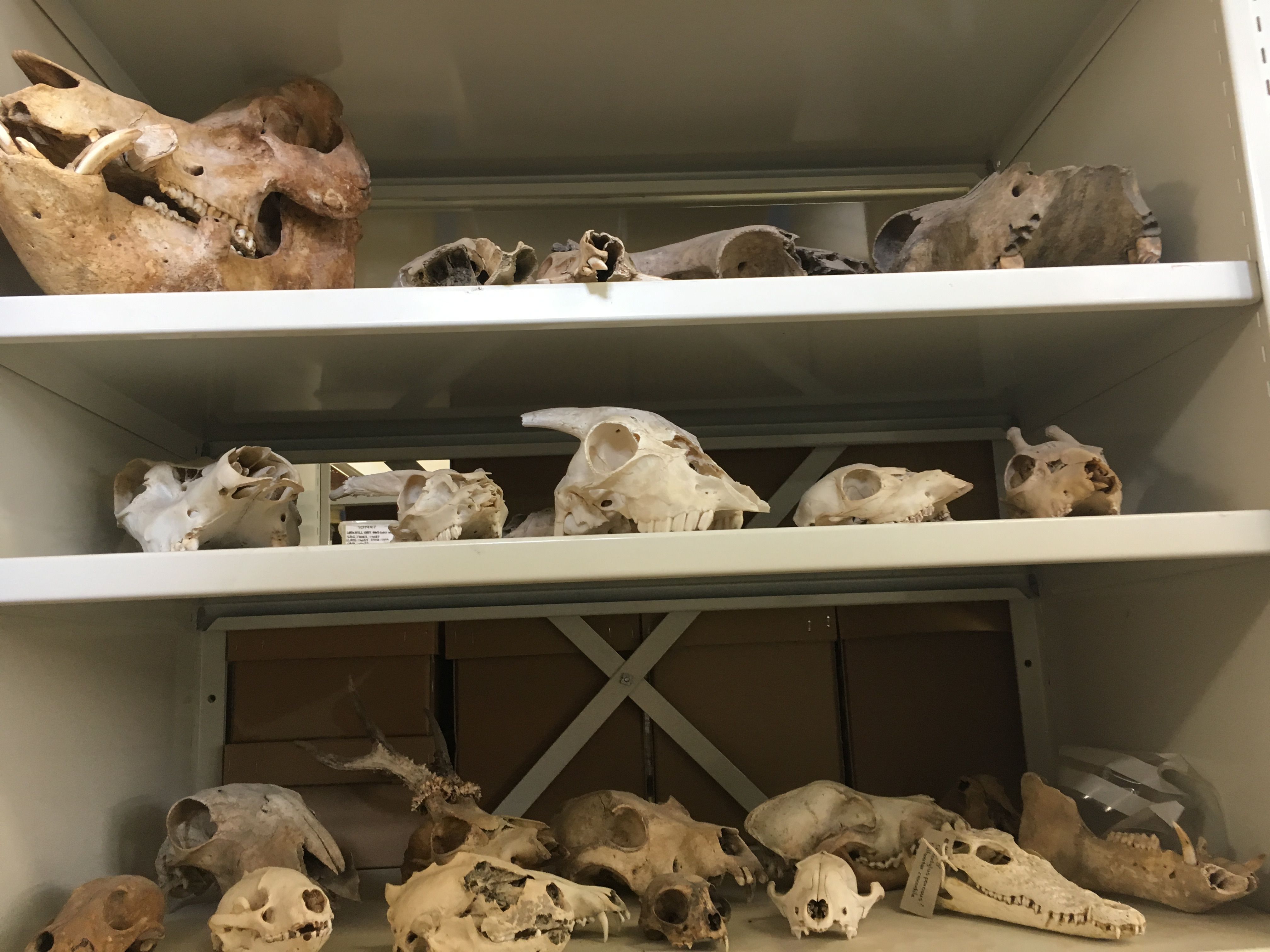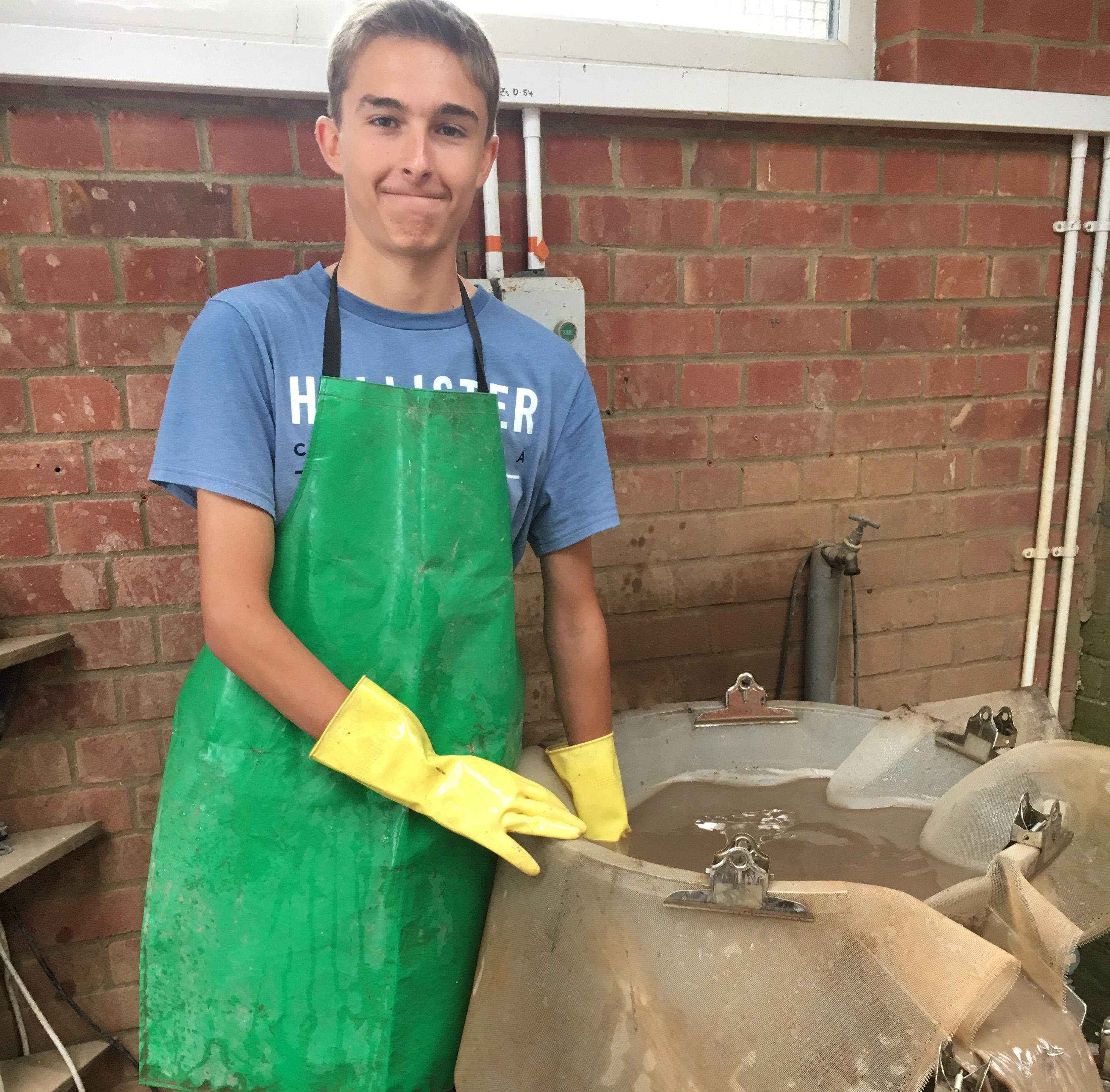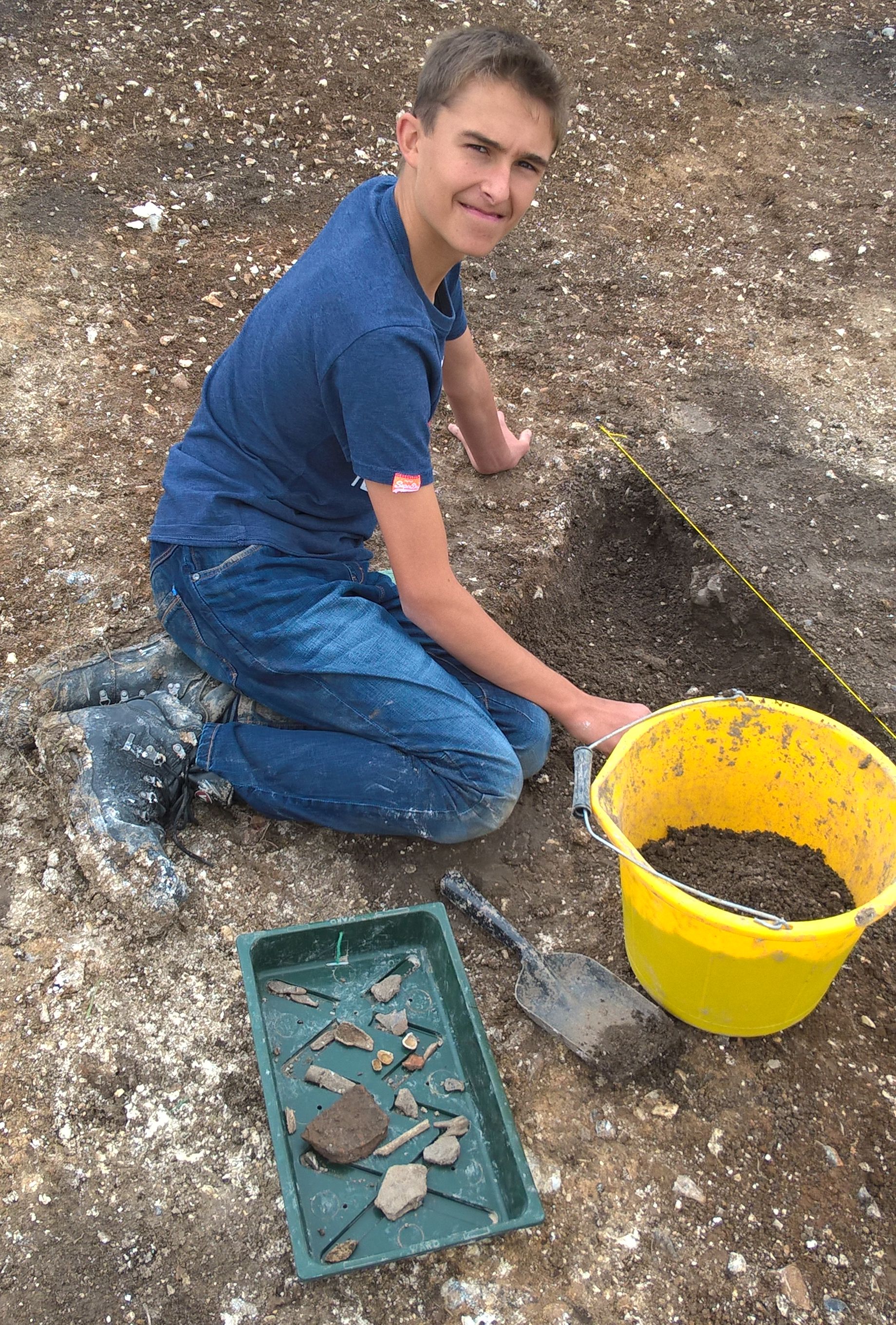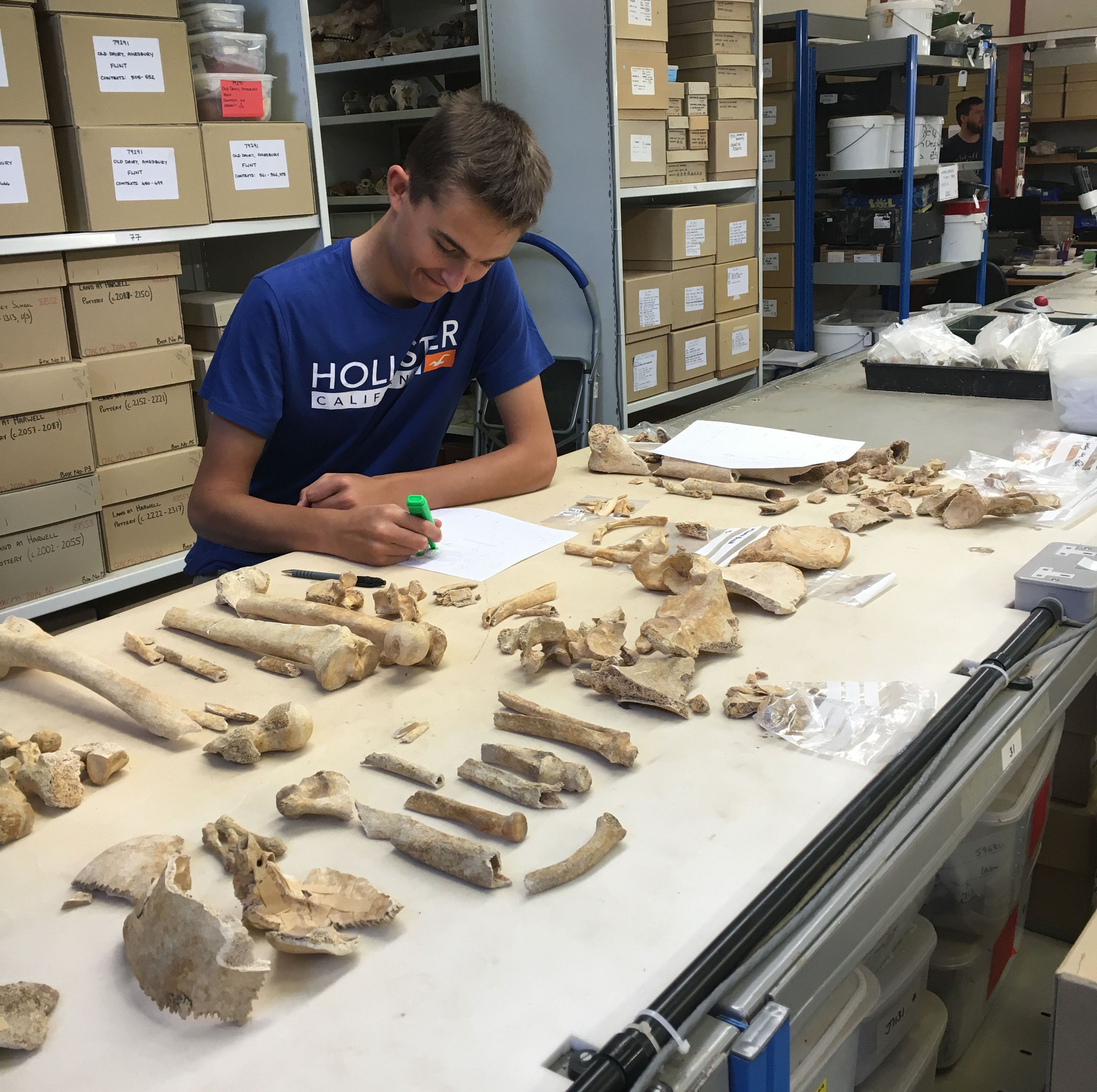I applied to Wessex Archaeology in early September 2016, getting my application in early to make sure I had a good opportunity of obtaining my chosen work experience. I was interviewed by Rachel Brown, who is in charge of all educational activities within WA. During the interview, I was told what to expect and given a tour of all the facilities. Rachel emailed me about a week before my placement to provide me with my timetable and reminders of what to wear for my field visit on the Wednesday. When this came through, it excited me about what I was going to do. It reminded me how much to the company there was, that there were many computer-based departments as well as the standard archaeology units.
Monday 10 July – First Day
I arrived for 9:30, making sure I had everything I needed in my rucksack. I was told in the email that I would be met by Linda, who is using her leadership role to embed the quality approach in the heart of the business and make sure it aligns with its strategy and objectives. I met Linda in her office, where she took me to Rachel’s room to brief me on everything to watch out for and how to lift heavy items. She also showed me a PowerPoint to do with Health & Safety. She then gave me a tour around the main building, showing me everything including Heritage, Geophysics, Archives, Finds and where to meet in the case of a fire.

The first department I was working with was Finds, and I was working with Sophie. This was a great place to start as it introduced me to some of the artefacts that they dealt with. We chose a box which had come back from a site. This contained many bags of flint, animal bone and a few other bits and pieces. I chose the animal bone as this looked interesting, which would take me through the morning quite nicely. I had small bones from the feet, to larger bones from the leg. Some of these animal bones contained small holes running down the middle of them. I had to get a stick and a toothbrush to get inside this to clean out all the mud and small pebbles. Overall, this was a great place to start with as the work was interesting and for me, it was an enjoyable place to start the week. Many of the other people working with me were very welcoming and easy to approach.
In the afternoon, I worked with Roberta and Vi in Geomatics. Here, they use many different techniques to create 3d models and site plans. They use laser scanners, which tells you the distance between an object and the scanner, which will then build up a 3d model or point cloud. The other technique they use is photogrammetry. This is where a person takes approximately 50 photos, which is then used in a programme called ReMake. This creates a 3D image of the item you are photographing. This was fun as I used a serious camera to take the photos and saw these photos progress into an image I could see in a 3D model on the computer. Roberta and Vi carefully explained about what they did as I had never seen anything like that before. I must thank them for that or I may have never understood what they did!

Tuesday 11 July – Second Day
Again, I arrived for 9:30 at Wessex. I was greeted by the receptionist who took me to Rachel’s office. I had a brief talk with Rachel about what I did on the Monday and I expressed my interest in what I had seen already. After that I was taken to meet Sam, who I was joining for the morning. There we were doing some sample processing. She showed me the ropes and with a bit of assistance, I quickly got the hang of it. We had buckets full of artefacts (and mud) which we filtered through a large tank. Anything that did not float was left at the bottom whilst we scooped out part of the ‘sample’ and put into a sieve. We then put these sieves into a small oven to dry off, which took 2−3 days. I managed to do about five buckets during my morning with her. I thought this was about average until I saw the masses of buckets they have to do. They have a tiring job! However, she told me that not every bucket will be done, they just have to record that it has come to WA.
In the afternoon, I was working with Naomi in the Heritage Department. They use many applications such as Google Earth, as well as external sources such as archives and records offices to aid them in their analysis of the site. These guys are the ones to ‘scope’ the area and look for potential archaeology if a new housing estate wants to be built on a certain area. They have quite an important role because if a housing estate was to be built on an area with significant archeologically importance, it might damage the archaeology.
I want to thank Sam and Naomi for giving up their time and showing me what they do for the company. It was really eye-opening, so thank you.

Wednesday 12 July – Third day and Site day
On the Wednesday, we visited a site at Chisenbury, North of Salisbury. They had just started to excavate the site and I was lucky to get involved in the digging of it. The site was being run by Project Manager Phil Andrews, who showed me around and made me feel very welcome with the rest of the team. The site was part of Breaking Ground Heritage and Operation Nightingale. There was believed to be an Iron Age roundhouse in the trench. You could actually see this by the dark sports making up the shape of a roundhouse. I and the others were excavating these dark areas to look for anything that might help identify who lived here and what it was used for. I found many bits of pottery, all of which were pretty small. I also found some animal bone which was identified as pigs tooth. For me, this was great because I was doing what most people know archaeology to be. I was doing what most people know archaeology to be. A tooth might not be the most interesting, but I found it really exciting to be finding that for myself. I would like to thank Rachel and Phil for organising this for me. Phil allowed me to come on site so I would like to thank him and his assistant for showing me and making me feel welcome. (Also, the rain kept off which was good!).
Thursday 13 July – Fourth Day
Today I worked with Coastal & Marine in the morning and then Archives in the afternoon. In the morning, I was working with Alistair and then Joaquin. Alistair showed me a PowerPoint which explained what they find and what procedures they have to follow. He also told me what locations he and others had visited, including finding a whole WW1 aircraft, with all the pieces still together. After this Joaquin took me over the storage room. This was where they kept all their diving gear, including containers, weights, jackets, dry and wet suits, helmet gear and how the air you carry is supplied to you while diving. However, the most interesting part for me was looking at some of the artefacts in there as well, this included a gigantic wooden keel. It was nearly half as long as the room!
Also in the room was old aircraft parts, including a propeller. Towards the end of my time with Joaquin in Costal & Marine, I was helping him prepare an upcoming dive. He had a three-page checklist in which he checked he had everything and I would tick it off the list. It was interesting to see how much they need to take with them.
Thanks Alistair and Joaquin for an insightful Thursday morning.
As I said earlier, I was with Archives in the afternoon for the last part of that day. I was working with Tom who deals with a lot of digital data. He was telling me, along with his colleague that before digitalisation there was a massive amount of paperwork involved. Today, they use computers for nearly everything which makes it a lot easier. They provide written schemes on how investigations are done and completed not just for WA, but for other companies too. They also archive how the job is coming along, so by the end of the site they are working on they will have a fact file on everything from start to finish. It was also at this point when I realised how everyone working at Wessex Archaeology uses number codes instead of place names. For example, the location I was taking a look at with Tom had the code 84441. This might seem quite simple. However, if you introduce 100 other sites with the same amount of numbers, it can get quite complicated. Thanks Tom, Archives was a good experience.
Friday 14 July – Last Day
On the last day, I was working with in environmental (sample processing) in the morning and doing osteoarchaeology (looking at human skeletons) in the afternoon. Even though I did sample processing on Tuesday, it wasn’t the same at all. We collected my now dry samples to work on. I, along with Sam, sieved through what seemed like endless rocks. I found a few small bits of pottery, some animal bone and a few pieces of flint, which we put in a tray to be put away until the environmental team was ready to inspect them. I had to correct a few of my mistakes with the context number, location number and what the artefact is (as Sam would know), but it was a fun. Once I had done about five or so trays, I moved next door to the environmental office. Here, I had a look at the samples I had processed 10 minutes before under a light microscope. I was collecting snails and bits of grain with tweezers. As explained by Ines and her colleagues, we can tell what the land was like and what crops were grown. For example, I found material that showed that my area of land had been a grassy, open field which had been used for growing wheat. It’s amazing what you can find from little samples.
Sadly, I was not with Ines or Sam for very long as I was having an early lunch break to get ready for the osteoarchaeologist. Thank you both!

The final session of my week I was working with human remains with Kirsten. Rachel introduced me to her and then we started straight away. We started off by looking at the remains of a middle-aged man who had lived in the mid-19th century. It was pretty much a complete skeleton. This was fascinating as she showed me how bones worked together in the body and how we could tell how old he was from simple markings on the bones. I found it astonishing how she could tell straight away what bone it was and where it was from in the body. We also had a close look at the pelvis, as this was one of the main areas you can get your information from. We managed to tell his age, how tall he would have been and whether he had suffered from any infections. We started to lay it out on the table so I could get a full perspective of what I was looking at.
After we had finished looking at this particular person, we moved on to what were the remains of at least three individuals. I was told someone was doing some building in their garden when they discovered them. Sadly, these remains were not found as a complete skeleton, but we did have most parts. We managed to identify from part of the pelvis roughly what age she had been. We managed to do this by looking at the surface of the bone and by how young-looking or rough the bone texture was. Finally, I asked the cliché question of: What has been your most interesting find?
She took me to her office where she showed me pictures of the early Bronze Age burials from Cliff’s End Farm, Kent . There were four skeletons in a big pit, two of which were children. However, what was interesting was that the older woman was buried holding a piece of chalk to her mouth. No-one knows exactly why this was and that’s what I love about archaeology; the mysteries. Kirsten also described how the bone from a nearby Saxon cemetery was less well preserved than the much earlier burials because the soil was different in that part of the site.
I would like to thank all of Wessex Archaeology, especially those who let me interrupt their busy routines, for letting me see what it is like as an archaeologist. I would especially like to thank Rachel for organising my whole week, making sure I was in the right place at the right time. It worked perfectly. I would definitely recommend others to apply for a work experience week here as the interest and enjoyment is endless. It was also a lot of fun! I hope to visit some time again soon.
Thanks,
Will Roe